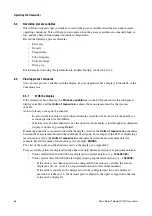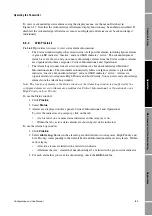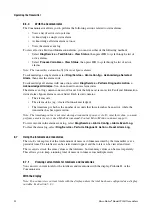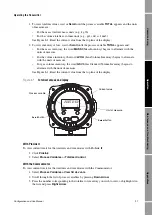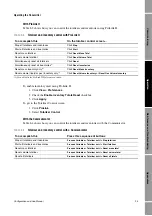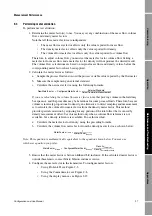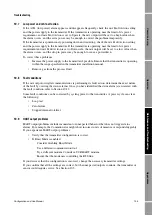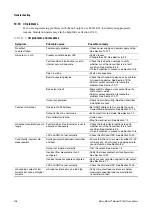
96
Micro Motion
®
Model 2200S Transmitters
Measurement Performance
9.2.2
Calibration
The flowmeter measures process variables based on fixed points of reference. Calibration adjusts
those points of reference. Three types of calibration can be performed:
•
Zero, or no flow (see Section 7.2)
•
Density calibration
•
Temperature calibration
Density and temperature calibration require two data points (low and high) and an external
measurement for each. Calibration produces a change in the offset and/or the slope of the line that
represents the relationship between process density and the reported density value, or the relationship
between process temperature and the reported temperature value.
Note: For density or temperature calibration to be useful, the external measurements must be
accurate.
Micro Motion flowmeters with the Model 2200S transmitter are calibrated at the factory, and
normally do not need to be calibrated in the field. Calibrate the flowmeter only if you must do so to
meet regulatory requirements. Contact Micro Motion before calibrating your flowmeter.
Micro Motion recommends using meter validation and meter factors, rather than calibration, to prove
the meter against a regulatory standard or to correct measurement error.
9.2.3
Comparison and recommendations
When choosing between meter validation and calibration, consider the following factors:
•
Process interruption
-
Meter validation does not interrupt the process.
-
Calibration requires process down-time. In addition, density and temperature calibration
require replacing the process fluid with low-density and high-density fluids, or
low-temperature and high-temperature fluids.
•
External measurement requirements
-
Zero calibration does not require external measurements.
-
Density calibration, temperature calibration, and meter validation require external
measurements. For good results, the external measurement must be highly accurate.
•
Measurement adjustment
-
Meter validation does not change flowmeter internal measurement in any way. If you
decide to adjust a meter factor as a result of a meter validation procedure, only the reported
measurement is changed – the base measurement is not changed. You can always reverse
the change by returning the meter factor to its previous value.
-
Calibration changes the transmitter’s interpretation of process data, and accordingly
changes the base measurement. If you perform a zero calibration, you can return to the
previous zero or the factory zero. However, if you perform a density calibration or a
temperature calibration, you cannot return to the previous calibration factors unless you
have manually recorded them.
Содержание 2200S
Страница 8: ...vi Micro Motion Model 2200S Transmitters ...
Страница 12: ...4 Micro Motion Model 2200S Transmitters ...
Страница 32: ...24 Micro Motion Model 2200S Transmitters ...
Страница 38: ...30 Micro Motion Model 2200S Transmitters ...
Страница 68: ...60 Micro Motion Model 2200S Transmitters ...
Страница 92: ...84 Micro Motion Model 2200S Transmitters ...
Страница 102: ...94 Micro Motion Model 2200S Transmitters ...
Страница 110: ...102 Micro Motion Model 2200S Transmitters ...
Страница 130: ...122 Micro Motion Model 2200S Transmitters ...
Страница 134: ...126 Micro Motion Model 2200S Transmitters ...
Страница 150: ...142 Micro Motion Model 2200S Transmitters ...
Страница 156: ...148 Micro Motion Model 2200S Transmitters ...
Страница 157: ......





